Contents
Page List
Guide

WOUNDED
COUNTRY
Q UENTIN B ERESFORD has had a diverse career in academia, the public service and journalism. For many years he was Professor of Politics at Edith Cowan University in Perth. He is the author of numerous books on Australian politics and history, and has won several literary awards for his work. His most recent books are the Rise and Fall of Gunns Ltd, which won the Tasmanian Premiers Literary Prize, and Adani and the War Over Coal. Both are published by NewSouth. He is currently adjunct Professor of Politics at the University of the Sunshine Coast.
Wounded Country is one of the most important books to emerge in recent decades concerning both Australias dangerous environmental mismanagement and the indivisible plunder of Indigenous society. The tragedy of this sorry story is not just that it concerns Australias, and one of the worlds, great river systems the Murray Darling Basin but also that the attitudinal, legislative and political drivers behind this ongoing despoliation remain both largely hidden and in place.
Based on forensic research, Beresford has written the definitive work on this complex and contested riverine system: what constitutes a shameful tragedian story. Particularly revealed is a deadly mix of shambolic management, greed-driven graft and political corruption that favours Big Cotton and Big Irrigation at the expense of Indigenous people, other farmers and graziers and the environment.
Wounded Country deserves to be placed alongside the classics in this genre and with such writers as Francis Ratcliffe, Jock Marshall, Bill Gammage and Bruce Pascoe.
Charles Massy, leading authority on regenerative farming and author of Call of the Reed Warbler
WOUNDED
COUNTRY
THE MURRAYDARLING BASIN
A CONTESTED HISTORY
QUENTIN BERESFORD

A NewSouth book
Published by
NewSouth Publishing
University of New South Wales Press Ltd
University of New South Wales
Sydney NSW 2052
AUSTRALIA
newsouthpublishing.com
Quentin Beresford 2021
First published 2021
10 9 8 7 6 5 4 3 2 1
This book is copyright. Apart from any fair dealing for the purpose of private study, research, criticism or review, as permitted under the Copyright Act, no part of this book may be reproduced by any process without written permission. Inquiries should be addressed to the publisher.
 A catalogue record for this
A catalogue record for this
book is available from the
National Library of Australia
ISBN 9781742236780 (paperback)
9781742249988 (ebook)
9781742239132 (ePDF)
Cover design Philip Campbell Design
Cover image River red gum at Chowilla Floodplain, South Australia, the largest remaining natural river red gum forest. Photo by Gary Sauer-Thompson
Internal design Josephine Pajor-Markus
Printer Griffin Press, part of Ovato
All reasonable efforts were taken to obtain permission to use copyright material reproduced in this book, but in some cases copyright could not be traced. The author welcomes information in this regard.
This book is printed on paper using fibre supplied from plantation or sustainably managed forests.

CONTENTS
Warning
Aboriginal and Torres Strait Islander people should be aware that this book contains words and descriptions written by non-Indigenous people in the past that may be confronting and would be considered inappropriate today. It also contains the names of deceased Indigenous people and graphic descriptions of historical events that may be disturbing to some readers.
The MurrayDarling Basin

INTRODUCTION
Australias MurrayDarling Basin is under threat. This vast geographical region, covering one million square kilometres and spanning four states and the Australian Capital Territory, has been over-exploited for nearly 200 years. It is an engine of national economic wealth creation through its vast river system comprising 20 main rivers and 77 000 kilometres of waterways and extensive grazing lands. Its delicate ecosystems have, for decades, been in decline. Waves of settlers plundered the regions potential, with little consideration for the consequences. An economy cannot be sustained forever on a degrading environment.
Agriculture has been conducted on a grand scale in the Murray Darling Basin. Pastoralism, wheat production and irrigated crops today generate agricultural production exceeding $10 billion each year; other industries, such as tourism and mining, lift the regions contribution to the Australian economy to an estimated $75 billion annually.
In recognition of the deteriorating state of the Basins ecology, and the economic consequences arising from it, the largest environment program in the nations history was unveiled in 2012 in an attempt to find a balance between the need to restore the Basins ecosystems and the demands of agriculture. But it is widely thought to be failing to stem the ongoing environmental decline. At stake is the future of Australias premier food bowl and the two million people who depend on agricultural industries for their livelihoods, and the iconic status the MurrayDarling has for Australians, both Indigenous and non-Indigenous.
St George in south-western Queensland is as good a place as any to contemplate the start of the MurrayDarling River system that acts as the main artery through the Basin. This picturesque, isolated town, nearly 600 kilometres west of Brisbane, is reached along a gun-barrel straight highway that shimmers in the summer haze. When I visited in November 2020, the Balonne River was a magnificent sight, with water flowing majestically through stands of river red gums.
One branch of the Balonne flows into the narrow, winding Culgoa River and then on a 3000-kilometre journey through the Darling and the Murray, eventually flowing into Lake Alexandrina and the Coorong wetlands on the South Australian coast. It takes eight months for the water to meander from its source to its final destination. Along the way it traverses varied and unique ecosystems: internationally renowned wetlands, important for their abundant wildlife; arid, flat plains that challenged the perseverance of explorers Charles Sturt and Thomas Mitchell and where all manner of marsupials and native birds co-exist; alpine regions providing melting snows to re-charge the Murray; and the verdant grasslands of western Victoria. Each is a quintessential Australian landscape. But for two centuries European Australians failed to appreciate the delicate balance that had sustained these ecosystems for thousands of years.
This book sets out to be an environmental history of the Murray Darling Basin. It seeks to explore Europeans relationship to the landscape, from the epic story of its discovery by explorers Sturt and Mitchell, through the invasion into Aboriginal traditional lands and the rapid dispossession of the Indigenous population, and on to the succeeding waves of settlement infused by grand ideas of nation-building. Both profiteers and the poor worked to fulfil the dreams of the nation-builders. But from the earliest years of white settlement, the exploitation of the Basin revealed Australians destructive relationship with the environment. Generations have been driven to tame this wilderness. Many bent it to their will and made fortunes; many others were broken by its harsh realities.

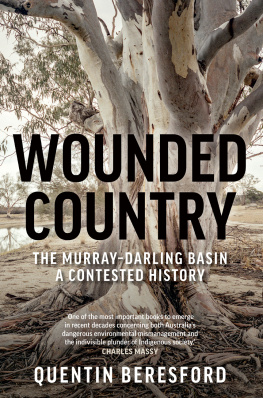
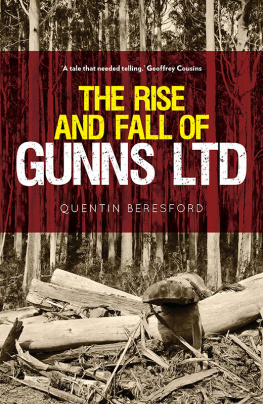
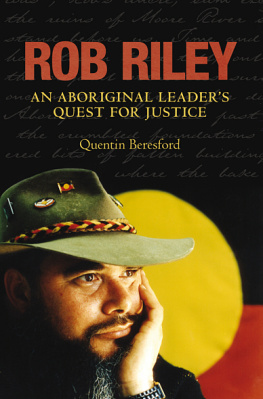

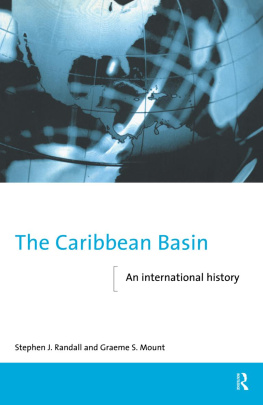
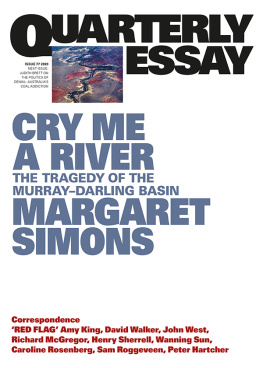
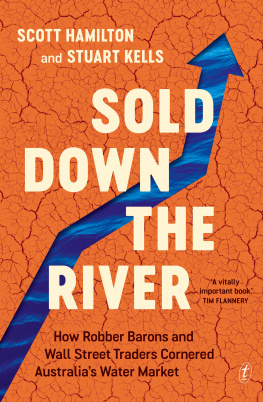
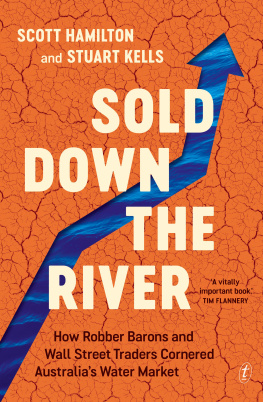
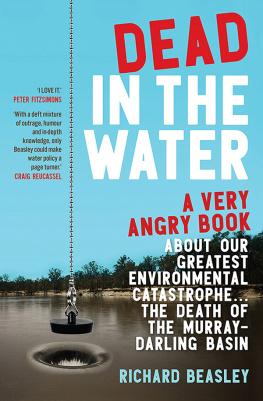


 A catalogue record for this
A catalogue record for this
